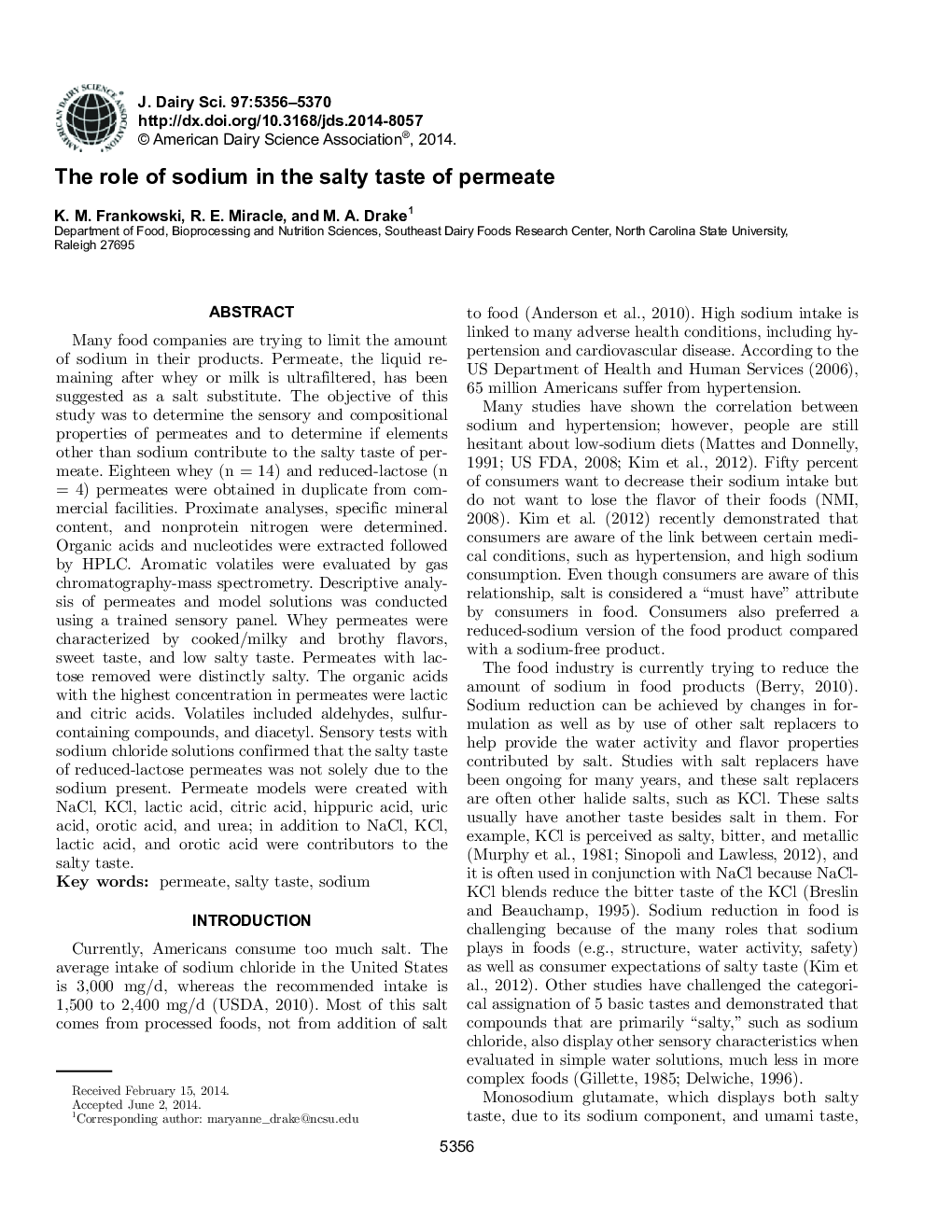| کد مقاله | کد نشریه | سال انتشار | مقاله انگلیسی | نسخه تمام متن |
|---|---|---|---|---|
| 10974093 | 1108022 | 2014 | 15 صفحه PDF | دانلود رایگان |
عنوان انگلیسی مقاله ISI
The role of sodium in the salty taste of permeate
ترجمه فارسی عنوان
نقش سدیم در طعم شور از نفوذ
دانلود مقاله + سفارش ترجمه
دانلود مقاله ISI انگلیسی
رایگان برای ایرانیان
کلمات کلیدی
نفوذ، طعم شور، سدیم،
موضوعات مرتبط
علوم زیستی و بیوفناوری
علوم کشاورزی و بیولوژیک
علوم دامی و جانورشناسی
چکیده انگلیسی
Many food companies are trying to limit the amount of sodium in their products. Permeate, the liquid remaining after whey or milk is ultrafiltered, has been suggested as a salt substitute. The objective of this study was to determine the sensory and compositional properties of permeates and to determine if elements other than sodium contribute to the salty taste of permeate. Eighteen whey (n = 14) and reduced-lactose (n = 4) permeates were obtained in duplicate from commercial facilities. Proximate analyses, specific mineral content, and nonprotein nitrogen were determined. Organic acids and nucleotides were extracted followed by HPLC. Aromatic volatiles were evaluated by gas chromatography-mass spectrometry. Descriptive analysis of permeates and model solutions was conducted using a trained sensory panel. Whey permeates were characterized by cooked/milky and brothy flavors, sweet taste, and low salty taste. Permeates with lactose removed were distinctly salty. The organic acids with the highest concentration in permeates were lactic and citric acids. Volatiles included aldehydes, sulfur-containing compounds, and diacetyl. Sensory tests with sodium chloride solutions confirmed that the salty taste of reduced-lactose permeates was not solely due to the sodium present. Permeate models were created with NaCl, KCl, lactic acid, citric acid, hippuric acid, uric acid, orotic acid, and urea; in addition to NaCl, KCl, lactic acid, and orotic acid were contributors to the salty taste.
ناشر
Database: Elsevier - ScienceDirect (ساینس دایرکت)
Journal: Journal of Dairy Science - Volume 97, Issue 9, September 2014, Pages 5356-5370
Journal: Journal of Dairy Science - Volume 97, Issue 9, September 2014, Pages 5356-5370
نویسندگان
K.M. Frankowski, R.E. Miracle, M.A. Drake,
